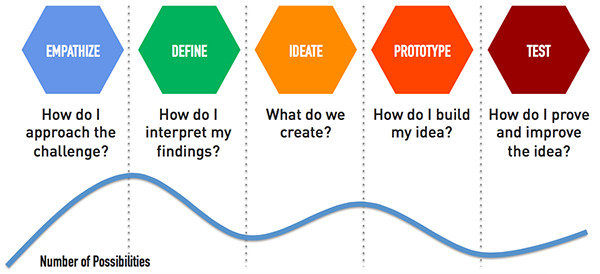In our globally connected world, being able to understand different perspectives is an essential part of engaging and taking action. By using design thinking processes, students and teachers create solutions to open-ended challenges. Central to this process are human-centered design frameworks and techniques that encourage working with the user of a product to design empathetic solutions.
It is an approach that strives to design or create products and experiences that are usable and useful by concentrating on the user, their needs and requirements, and by applying human factors/ergonomics, and usability knowledge and techniques.
In the idea development stage you have already walked through some of the phases of design thinking. As you read through this theory, reflect on the processes you have already gone through.
Put aside all assumptions and gather facts about the user. At this phase, the developer spends time to know and understand what the user’s wants, needs, and objectives by observing and engaging with the user in order to understand him/her on a psychological and emotional level.
Start making sense of the data collected in phase one by identifying what the user is missing. What problems are they facing? How can this problem be resolved? This will help you develop a clear problem statement. The key is to frame the problem in a user-centered way. Once a problem statement is formulated, begin brainstorming ideas to address the problem.
At this phase, the idea is to collaborate and develop ideas. It is time to establish potential solutions, put on your thinking cap, and be open to anything that comes to mind. This phase allows you to implement ideation techniques that will assist in narrowing down the ideas. The developer should be willing to challenge established beliefs and explore new options and alternatives of resolving a problem.
This phase is about turning ideas into tangible products. The key is to put each solution to the test and to highlight any constraints and flaws. During this phase, the proposed solutions may be accepted, improved, redesigned or rejected depending on how they fare in prototype form.
It is time to test what you have created. This phase usually feels like the last stage in design thinking, however, the results of the testing phase may lead you back to the prototyping phase, providing the insights you need to redefine the original problem statement or to come up with new ideas you hadn’t thought of before.

Image source: girledworld